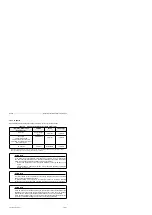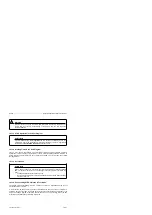
Rules for Failsafe Operation of an S5-95F
S5-95F
18.12
S5-95F Response Times
The maximum response times must always be computed for systems and processes which require
approval. The maximum response times must be less than the maximum values stipulated by the
rules and conventions and by the qualified experts.
The following subsections discuss the S5-95F's response times under worst-case conditions. In
addition to the response times described here, factors such as the delay times for sensors and
actuators and the delay times of mechanical parts such as the stamp in our example.
18.12.1 Response
Time
and
Signal Duration for Cyclical Program Processing
If a change in an input signal results in a change in an output signal, the S5-95F's response time is
defined as the moment at which the signal changes at the S5-95F's input terminals until the moment
at which the signal changes at the S5-95F's output terminals.
In quasi-safety mode, the S5-95F responds with STOP when the maximum cycle time specified in
DB1 is exceeded. As a result, the maximum response time T
OB1 response
is computed as follows:
T
OB1 response
=2×max. PLC cycle time
1)
1) You must specify the value for the max. PLC cycle time in DB1
The use of the programmer's STATUS function in Test mode increases the response time. In the
worst case, a response time T
OB1 response
of up to 10 times the maximum PLC cycle time is a
possibility.
As a rule, the response times to process changes are lower. Please refer to section 7.4.3 for more
information.
Increased Response Time Based on the Programmer's STATUS Function
Note
When it executes the STATUS function, the S5-95F processes the specified block in a
special mode; the block's runtime is thereby considerably increased, and is operation-
dependent. Please note that this also results in an increase in both the PLC cycle time
and the response time. For this reason, keep your blocks as short as possible.
The formula shown above remains the basis for the maximum response time for
T
OB1 response
.
Minimum Signal Duration During Execution of OB1
Note
During a cyclic program scan, the S5-95F detects a signal change under worst-case
conditions only when signal levels "0" and "1" remain present for
at least one OB1
cycle.
18-22
EWA 4NEB 812 6210-02
















































